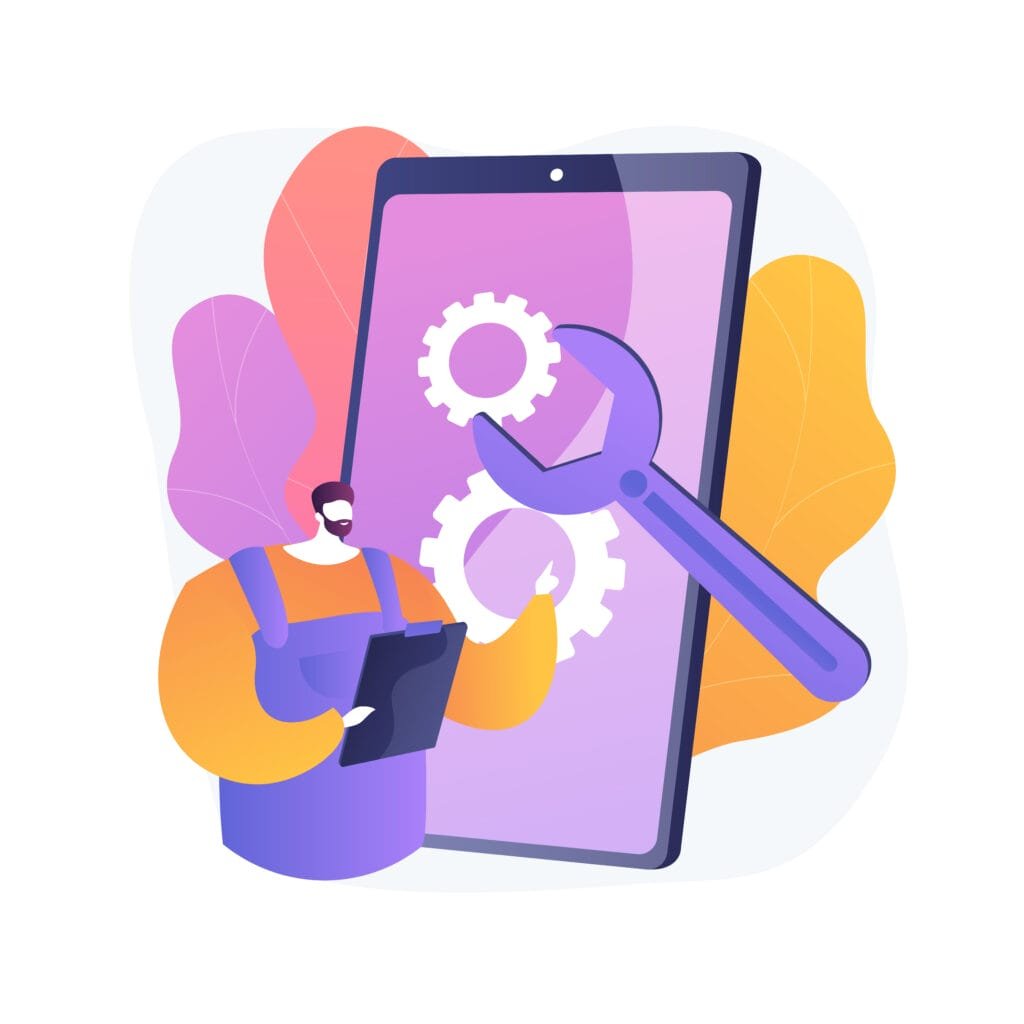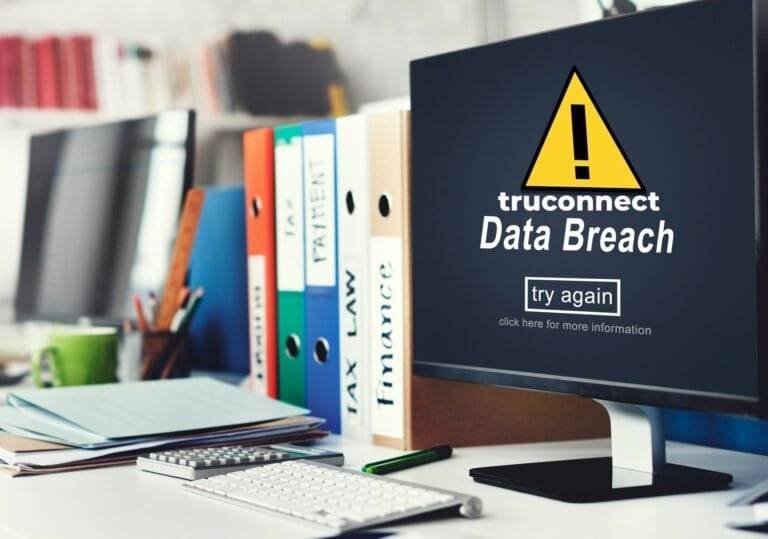Protecting Your Data from Lorenz Ransomware Attacks: Best Practices
Introduction
In an era when cyberattacks are becoming more frequent, protecting your data is essential. One of the most recent dangerous programs is the Lorenz ransomware, which puts your online security at serious risk. It’s critical to understand the details and implement practical safeguards to protect your data from possible breaches.
We explore the topic of protecting your data against Lorenz ransomware attacks in this article. By analyzing the mechanisms of this malevolent software and investigating strong protection methods, this article aims to provide you with the necessary information to strengthen your digital stronghold.
Understanding Lorenz Ransomware
In the field of cybersecurity, Lorenz ransomware is a formidable adversary that uses advanced methods to infiltrate networks, encrypt data, and hold it captive until a ransom is paid. It is essential to understand the workings of this harmful program to improve your defenses.
Evolution and Modus Operandi
Lorenz ransomware is a covert operation that typically gains access to systems using phishing emails, infected attachments, or exploits in old software. It is an offshoot of the well-known Ryuk ransomware. It encrypts files once it’s within a network, making them unreadable without the decryption key—which the attackers demand be paid in ransom—to unlock.
Impact and Consequences
A Lorenz ransomware assault can have disastrous results. Businesses face operational disruptions, financial consequences, and reputational harm in addition to the immediate loss of access to vital data. Attackers may demand huge amounts of money, which may worsen the situation for the affected organizations.
Notable Instances

The effectiveness of Lorenz ransomware has been demonstrated by several widely reported cases. Its capacity to attack businesses in a variety of industries highlights the necessity of effective cybersecurity defenses. To build up defenses against such dangers, it becomes necessary to learn from these events.
Mitigation Strategies
Understanding how the Lorenz ransomware functions makes it possible to take preventative action. An array of layers, from thorough employee training to the implementation of modern security solutions, acts as a barrier against possible intrusions.
To prevent potential cyber threats and proactively protect your digital assets, be aware of the details of the Lorenz ransomware.
Common Attack Vectors
Using a variety of entry vectors, the Lorenz ransomware infiltrates systems by taking advantage of flaws and mistakes made by users. It is essential to understand these typical attack vectors to improve your defenses against possible breaches.
Phishing Attacks
Phishing emails are one of the main techniques the Lorenz ransomware employs. Attackers create emails that look authentic, tempting recipients to open corrupted attachments or click on dangerous links. These emails frequently pose as reliable sources or include critical notifications that demand immediate attention.
Exploiting Software Vulnerabilities
Ransomware attackers use outdated software as a playground. Lorenz takes advantage of holes in operating systems or software that aren’t patched with important security updates. Systems that are not updated are vulnerable to ransomware attacks.
Remote Desktop Protocol (RDP) Exploits
RDP exploits are used by attackers to obtain unauthorized system access. Attackers of the Lorenz ransomware use weak or default passwords in conjunction with unsafe RDP configurations as access points into networks, where they can install their harmful malware.
Malvertising and Drive-By Downloads
Another potential source of attack is malicious advertising, or malvertising, on websites or through drive-by downloads. Users who access infected websites without thinking twice might accidentally allow malware, such as the Lorenz ransomware, to download or execute, putting their systems at risk.
Social Engineering Attacks
Error by humans is still a serious threat. Ransomware attackers frequently use social engineering techniques, such as forcing people into revealing private information or carrying out destructive deeds, to gain unwanted access to networks.
The first step in improving your defenses against Lorenz ransomware is to become aware of these typical attack routes. The possibility of being a victim of these assaults is greatly reduced by putting strong security measures in place and teaching users about these strategies.
Importance of Data Protection
In today’s linked digital world, protecting data against Lorenz ransomware is not just an option—it is an absolute must. Understanding the importance of data protection shows the critical requirement for strong security measures.
Preserving Confidentiality and Integrity
Organizations depend heavily on data, which includes sensitive information that is essential to daily operations. By protecting this information, confidential information is ensured and critical corporate, financial, or personal information is kept safe from illegal access or leaks. Furthermore, preserving data integrity protects against unwanted changes, ensuring that the information is correct and trustworthy.
Upholding Continuity and Trust
Data protection solutions are essential for maintaining company continuity in the case of a ransomware attack. Having strong security policies and safe backups reduces downtime and facilitates quick recovery. Furthermore, a proactive approach to data protection improves an organization’s reputation for security and dependability by building trust among stakeholders and clients.
Compliance and Legal Obligations
Organizations in a variety of industries are required to comply with data protection laws and standards. Adherence to legislation such as GDPR, HIPAA, or CCPA serves to both prevent legal consequences and uphold ethical standards when managing confidential data. Serious fines and reputational harm to a corporation could follow non-compliance.
Mitigating Financial Losses
An assault with Lorenz ransomware might have extremely negative financial effects. Businesses must deal with expenses related to system restoration, possible legal consequences, and revenue loss from interrupted operations in addition to ransom demands. Tough data security protocols act as a barrier against these monetary consequences.
Recognizing the many aspects of data protection against Lorenz ransomware highlights the necessity of taking preventative action. Setting data security as a top priority reduces risks and increases defenses against changing cyberattacks, ensuring ongoing operations and protecting priceless assets.
Best Practices for Protecting Data
Protecting your data against the Lorenz ransomware requires a multifaceted strategy that includes preventive techniques and strong protection measures. Your defenses against possible cyber threats improve when you put these recommended practices into effect.
Implementing Strong Passwords
Create strong, unique passwords to start increasing your digital boundaries. Enforce complicated password policies on all devices and systems, preventing combinations that are predictable or simple to figure out. To create and safely store complex passwords, use password managers.
Regular Software Updates

Make sure that your software is updated on schedule to stay one step ahead of potential risks. Patching and updating operating systems, apps, and security software regularly closes vulnerabilities that ransomware criminals frequently take advantage of.
Secure Backup Solutions
Make and keep redundant, safe backups of your most important data. Install automated backup systems that store data elsewhere or in the cloud and run backups regularly. Make sure that in the event of a ransomware attack, these backups can be quickly retrieved and encrypted.
Employee Training and Awareness
Inform staff members of the dangers presented by phishing emails, dubious connections, and social engineering techniques employed by ransomware perpetrators. Organize frequent training sessions to raise awareness and cultivate a cybersecurity-aware culture within the company.
Network Segmentation
To prevent any breaches, divide your network into smaller, more isolated sections. Segmentation reduces the effect of ransomware attacks by limiting lateral mobility throughout the network, avoiding widespread infection.
Endpoint Security Solutions
Install strong endpoint security solutions, such as intrusion detection systems, firewalls, and antivirus programs. These products serve as the first line of defense, spotting and blocking ransomware attempts on specific machines.
Incident Response Plan
Create and maintain an incident response strategy that outlines what should be done in the case of a ransomware attack. Procedures for containment, recuperation, and communication should be part of this plan to minimize the effects as soon as possible.
Regular Data Audits
To determine whether data protection measures are effective, conduct regular audits. Evaluate vulnerability, upgrade security procedures, and adjust tactics in response to new dangers to ensure ongoing defense against ransomware assaults.
By putting these recommended practices into practice, a strong protection against Lorenz ransomware assaults is created. A thorough strategy, along with preventative actions and ongoing attention to detail, fortifies your defenses against changing cyber threats.
Implementing Strong Passwords
The strength of your passwords is the foundation of digital security. Establishing strong password practices is essential to bolster your defenses against the Lorenz ransomware and other cyber threats.
Complexity and Uniqueness
Create complex passwords by combining special characters, digits, and both capital and lowercase letters. Don’t include information that can be guessed, such as names, birthdays, or everyday words. To prevent widespread compromise if one password is compromised, emphasize the uniqueness of each password across several accounts.
Password Length and Encryption
Password security is influenced by length. Choose passwords that are longer—ideally more than 12 characters—as this will make it much harder for attackers to figure out them. Think about passphrase techniques as well, combining lengthier yet memorable word or phrase combinations. To prevent unwanted access, encrypt passwords using reliable encryption techniques.
Regular Software Updates
One of the most important defenses against Lorenz ransomware and other online attacks is to keep your software updated. In addition to improving system efficiency, timely upgrades fix security holes that hackers take advantage of.
Patching Vulnerabilities
Updates for software frequently include important patches that fix known vulnerabilities. These weaknesses are exploited by attackers to gain access to systems and install ransomware. Frequent updates close these vulnerabilities and increase the defenses of your system against further intrusions.
Importance of Operating System Updates
Ransomware attacks primarily target operating systems. It is essential to update operating systems—including Windows, macOS, and Linux—regularly. These updates fix security flaws present in previous iterations in addition to enhancing functionality.
Application Updates
Quick updates should also be made for applications, such as office suites, security software, and browsers. Security patches, bug fixes, and improvements that lessen the possibility of ransomware attackers exploiting the system are frequently included in these upgrades.
Automated Update Mechanisms
To speed up the update process, use automated update techniques. By eliminating the need for human intervention, automatic updates guarantee that programs and systems are patched regularly, minimizing the window of vulnerability.
Risk of Delayed Updates
Software upgrades expose systems to known vulnerabilities if they are ignored or delayed. Attackers use unpatched systems to continuously adapt their approaches. A system is more vulnerable to ransomware assaults the longer it is left unpatched.
Testing Updates

It is best to test upgrades in controlled contexts before implementing them throughout a network or system. By doing this, the possibility of compatibility problems or unexpected consequences that can cause operations to be disrupted is reduced.
Continuous Vigilance
It’s critical to keep a watchful eye on software upgrades. Maintain a close eye out for software vendor updates, and install them as soon as possible on all devices and systems to ensure full defense against ransomware attacks.
Frequent software upgrades increase the overall security posture of systems and networks and function as a proactive defense mechanism against the Lorenz ransomware. They also minimize the attack surface. A culture of regular updating must be adopted to protect against changing cyber threats.
Secure Backup Solutions
Strong backup solutions become essential in the face of the Lorenz ransomware as a defense against data loss and extortion. Putting in place safe backup procedures ensures that important data will be accessible even in the case of a ransomware attack.
Importance of Secure Backups
Safe backups protect from ransomware assaults. They minimize downtime, lessen the effect of possible breaches, and offer a way to recover crucial data without giving in to ransom demands.
Regular and Redundant Backups
Establish a thorough backup plan that includes routine, automatic backups of important data. To provide accessibility and resistance against data loss, create redundancy by storing backups in multiple locations, such as secure cloud storage and local servers.
Encryption and Access Controls
Protect backup data from unwanted access by encrypting it. Establish strict access controls that restrict who can edit or remove backups, protecting the integrity of data stored from potential attacker manipulation.
Automated Backup Processes
To ensure dependability and consistency, automate backup procedures. The use of manual interventions is eliminated by scheduled, automated backups, which ensure that important data is regularly and consistently backed up while reducing the possibility of human error.
Testing Backup Restorations
Test the backup restoration method frequently to ensure its effectiveness. Regular drills make sure that backups are functional and can be quickly restored in the case of a data loss incident or ransomware attack.
Versioning and Retention Policies
To keep several backup copies, use versions and retention policies. This gives flexibility and choices for recovery without being impacted by possible ransomware-caused data corruption by enabling the restoration of data from several points in time.
Offsite and Isolated Storage
It is advisable to store backups in isolated and offshore environments to avoid ransomware damaging backup data. By separating backups from the main network, you may reduce the risk of an attack on them and maintain their availability and integrity in urgent situations.
Putting safe backup systems in place creates a strong barrier against ransomware assaults by Lorenz. Organizations may protect their vital data, lessen the effects of ransomware outbreaks, and accelerate recovery procedures to quickly restart operations by giving strong backup strategies a priority.
Employee Training and Awareness
One of the most important protection strategies against Lorenz ransomware is equipping staff members with the knowledge and abilities to recognize and stop possible ransomware attacks. Strong training and increased awareness are critical components of building the human firewall.
Recognizing Phishing Attempts
Inform staff members about the common characteristics of phishing emails that serve as gateways for ransomware assaults. Teach children to spot shady emails, such as those with unexpected attachments, strange senders, or sudden demands for private information.
Vigilance in Clicking Links
Promote using caution while visiting links, particularly those found in emails and on websites. Stress how important it is to mouse over links to see the destination URL and confirm their veracity. Employees should be instructed to never click on shady or unexpected links.
Avoiding Unauthorized Downloads
Inform staff members of the dangers of downloading files from unreliable sources. To reduce the possibility of unintentionally downloading files contaminated with ransomware, emphasize the significance of only obtaining files from reliable and trustworthy sources.
Password Security and Management
Teach people the importance of using secure passwords. To improve their digital identities and protect company data, personnel should be trained on the establishment of difficult passwords, password hygiene, and the usage of password management software.
Reporting Suspicious Activities
Provide staff with clear reporting guidelines so they may report any suspicious activity or possible security hazards right away. Promote an environment where staff members are free to report irregularities without fear of consequences, allowing for quick risk mitigation.
Regular Security Training Sessions
Organize frequent security training sessions to remind staff members of best practices and to keep them informed about new ransomware strategies. To guarantee that employees continue to be aware of and comprehend the material, make the training dynamic and interesting.
Network Segmentation
Putting network segmentation techniques into practice provides a strong obstacle against Lorenz ransomware assaults. Partitioning a network into more manageable, separate areas improves security by limiting ransomware’s ability to propagate and lessening its effect on important systems.
Purpose of Network Segmentation

Network segmentation is the process of separating a network into discrete sections and keeping them apart. By limiting the ransomware’s ability to travel laterally within the network, this separation reduces the attack surface and stops widespread infiltration.
Types of Segmentation
Apply segmentation according to a range of factors, including departments, user roles, and system criticality. To establish barriers that stop ransomware from spreading, use physical segmentation with different networks or virtual local area networks (VLANs).
Access Controls and Restrictions
Implement stringent access controls in network segments. Reducing the possibility of unwanted access and controlling potential ransomware breaches is achieved by limiting permissions and access rights to particular segments depending on work functions or requirements.
Reducing Attack Surface
Segmentation reduces the attack surface that ransomware can exploit by partitioning the network. If there is a breach, the impact is limited to the sectioned area, limiting damage and preventing broad infiltration.
Monitoring and Surveillance
Use surveillance techniques and monitoring tools in each section to spot unusual activity or possible ransomware attempts. Ongoing surveillance facilitates the prompt detection and management of dangers inside designated zones.
Isolation and Quarantine Measures
When ransomware attempts or suspicious activity is discovered within a segment, automatically implement isolation and quarantine methods. To stop threats from spreading to other areas of the network, automated responses aid in containing and neutralizing them.
Implementation Challenges and Best Practices
Be aware of potential obstacles to network segmentation implementation, such as interoperability problems and complexity. Use best practices to ensure a smooth and successful segmentation approach, such as careful planning, coordination between the IT and security teams, and phased implementation.
Regular Evaluation and Updates
As risks and network requirements change, segmentation solutions should be continuously assessed and improved. To keep segmentation policies effective in preventing ransomware attacks, update and modify them regularly.
Network segmentation is a strong obstacle against ransomware assaults like Lorenz. Organizations may improve overall cybersecurity resilience and greatly reduce the danger of ransomware propagation by enforcing strict access controls and compartmentalizing networks.
Endpoint Security Solutions
Keeping individual machines, or “endpoints,” safe from the Lorenz ransomware is critical to improving cybersecurity defenses as a whole. By implementing strong endpoint security solutions, devices are protected against possible ransomware assaults.
Importance of Endpoint Security
Ransomware attacks often target endpoints, which include laptops, desktop computers, smartphones, and other connected devices. Because these endpoints are entrance points and possible targets for ransomware infection, they must be secured.
Anti-malware and Antivirus Protection
Install dependable antivirus and anti-malware software on every endpoint. These solutions offer real-time defense against malicious software trying to enter devices by identifying and eliminating ransomware threats.
Firewall and Intrusion Detection Systems (IDS)
To monitor and filter incoming and outgoing network traffic, turn on firewalls and intrusion detection systems (IDS) on endpoints. By serving as a barrier against suspicious activity and attempts at unauthorized access, these technologies prevent ransomware attacks at the device level.
Conclusion
Data protection must be given top priority in the face of emerging cyber threats like the Lorenz ransomware. By implementing comprehensive strategies, the danger of data compromise can be reduced and defenses improved.
FAQs
What is Lorenz Ransomware?
Lorenz Ransomware is malicious software designed to infiltrate computer systems, encrypt files, and demand a ransom for decryption. It restricts access to critical data, posing significant threats to individuals and businesses.
How does Lorenz Ransomware operate?
Lorenz Ransomware typically enters systems through phishing emails, software vulnerabilities, or by exploiting weak security protocols. Once inside, it encrypts files, making them inaccessible until a ransom is paid.
How to prevent Lorenz Ransomware attacks?
Preventing Lorenz Ransomware involves proactive measures such as keeping software updated, employing robust cybersecurity tools, conducting regular backups, and educating employees about potential threats.
What should I do if infected by Lorenz Ransomware?
If infected, disconnect the affected device from the network immediately to prevent further spread. Report the incident to IT support or cybersecurity experts for guidance on mitigation and recovery.
Is paying the ransom advisable in Lorenz Ransomware attacks?
Paying the ransom doesn’t guarantee data recovery and can further fund criminal activities. It’s recommended to seek assistance from cybersecurity professionals to explore alternative solutions.
How effective are antivirus programs against Lorenz Ransomware?
While antivirus programs play a role in detecting and blocking malware, they may not offer complete protection against evolving threats like Lorenz Ransomware. Employing multiple layers of security is advisable.








One Comment